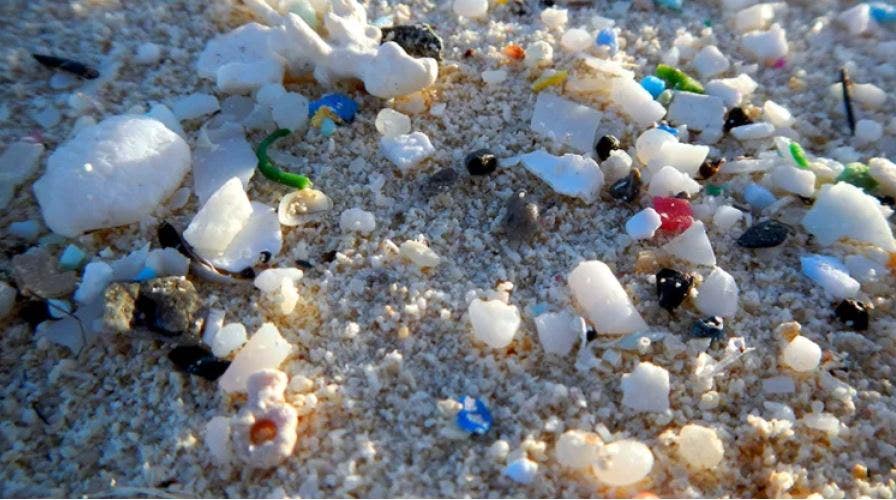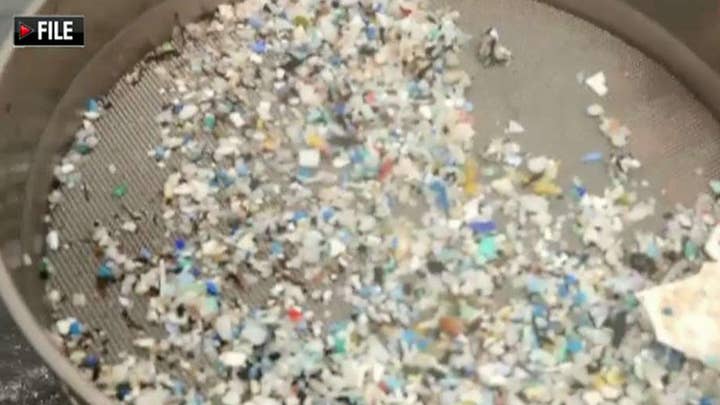Fox News Flash top headlines for Dec. 4
Fox News Flash top headlines for Dec. 4 are here. Check out what's clicking on Foxnews.com
The amount of microplastic in the world's oceans is a million times greater than previously thought, according to alarming new research.
New research published in the science journal Limnology and Oceanography Letters shows that the concentrations of micro-sized pieces of plastic -- those measuring smaller than 5 millimeters -- are actually five to seven times greater than scientists had previously estimated.
The discrepancy between these new findings and previous studies is related to the type of microplastics and how scientists have measured them in the water.
Biological oceanographer Jennifer Brandon estimated that, on average, the ocean is contaminated by 8.3 million pieces of "mini-microplastic" per cubic meter of water.
FROTHY, TOXIC FOAM COVERS FAMOUS BEACH

Plastic waste on the shore. (NOAA) (NOAA)
However, previous studies looking at larger pieces of plastic found only 10 per cubic meter.
“For years we’ve been doing microplastics studies the same way, [by] using a net to collect samples. But anything smaller than that net mesh has been escaping,” Brandon said in a press release.
Microplastics have been described as "ubiquitous," even able to reach the most remote parts of our planet. A September study found that Florida's Tampa Bay alone contains 4 billion bits of microplastic.
Microplastics are typically measured by trawling a submerged net with fine mesh through the water. However, a 2015 review of more than 11,000 trawls from 1971 to 2013 showed that 90 percent of those experiments used a net that only captured plastics as small as 333 micrometers, or one-third of a millimeter, in diameter.
ROYAL DYNASTY FACIAL DEFORMITY WAS CAUSED BY INBREEDING, SCIENTISTS SAY
The new research found plastic as tiny as 10 micrometers, which is smaller than the width of a human hair.
“I saw these published size ranges and thought, we are under-sampling this smaller range. There’s a big knowledge gap,” Brandon said.
Brandon found microplastics in salps, which are quite low on the ocean's food chain because they feed on some of the tiniest creatures of the sea. But, as she pointed out, the debris can still travel further up the food chain.
“No one eats salps but it’s not far away on the food chain from the things you do eat,” she added.






















